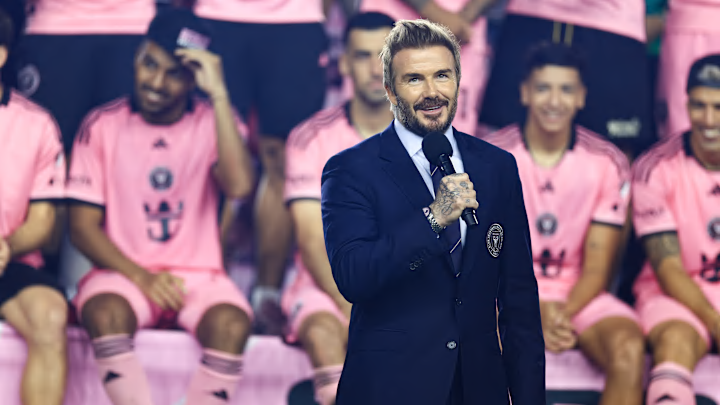When David Beckham landed in the U.S. back in 2007, soccer was practically just background noise in the country’s sports scene. The main stage was fully occupied by the heavyweights, football, basketball, baseball. Beckham, already a living legend, came with a rather modest promise: not to just be a star but to truly grow the sport and somehow bring it into the fast-paced rhythm that America loves.
The plan kicked off with a jaw-dropping $250 million contract. Only later did folks realize that astronomical number was a PR masterstroke from Beckham’s team. His actual salary with the Galaxy was $32.5 million over five years; that’s $6.5 million a season, not too shabby but far from the $250 million that was all over the headlines. Still, that number got everyone talking; Galaxy tickets became hot items, stadium suites sold out, and suddenly, the world’s eyes turned toward MLS. Even though Beckham hadn’t promised the moon, it felt like, somehow, American soccer was getting a sprinkle of British magic.
Follow MLS Multiplex on X (Twitter).
Yet the real game-changer wasn’t just on the field. As Beckham was carving out his turf in Los Angeles, behind the scenes, his impact was almost like a piece of corporate art. His unique contract included a perk that no other player had, a one-of-a-kind option to buy an MLS expansion team outside of New York for a set price of $25 million. This peculiar clause hinted at his plans, and one could say that the ex-Manchester United and Real Madrid star already had the sharp vision of an eagle. So, when he took that option in 2014 and announced the birth of Inter Miami, it was clear Beckham wasn’t just here to play soccer; he was here to leave a lasting mark.
And that’s where Inter Miami steps in as a huge chapter in this saga. It wasn’t just another team; it was an ambitious project that shook up the league’s very foundations. Sure, Inter’s journey hasn’t been a walk in the park. The promises were sky-high, and for years, Beckham and his crew battled to secure a stadium and finally get the team on the pitch. But, just like in a feel-good movie, after a long wait, they finally launched the team in 2020. With Beckham as both the face and owner, the club quickly grabbed the limelight and attracted major international stars, adding even more credibility to the league.
But the real tipping point hit in 2023 when Lionel Messi joined the show. Signing Messi was the kind of move that captures imaginations and catapults American soccer to heights that seemed impossible not too long ago. With Messi on board, Inter Miami’s popularity shot through the roof. The club clinched the Leagues Cup, qualified for the CONCACAF Champions Cup, and suddenly, a franchise barely three years old was already one of the most valuable in the league.
On one hand, Beckham’s presence, and now Messi’s, undoubtedly shines an unprecedented spotlight on American soccer. Big-name players like Higuaín, Matuidi, and Busquets have all come stateside, following the path Beckham paved. Not to mention the creation of the Designated Player Rule, which shattered the league’s tight salary cap, allowing teams the freedom to sign marquee players. All this has injected a touch of glamor, media buzz, and that special kind of showmanship that hooks the American fan.
But on the other hand, there’s still this lingering question: despite these superstar arrivals, is soccer still living in the shadow of traditional American sports? Sure, Messi’s arrival sparked an explosion of new fans, and yes, Beckham was a visionary in drawing so much attention to the league. But, honestly, how many young Americans are choosing soccer as their top sport? The league’s viewership numbers still don’t hold a candle to the NFL or NBA, and unlike what we see in soccer-obsessed countries like Brazil or Argentina, the sport here still feels like an undercard act.
Some argue that by zeroing in on big names, the league might be missing out on a golden chance to build a grassroots foundation of homegrown talent. Instead of splurging on European veterans, maybe the league could be investing in youth academies, developing local players, and pushing American talent to the forefront. While the big stars pull in the crowds, real, sustainable growth may need more than just hefty contracts and flashy names. MLS still has a challenge on its hands if it wants to stand as a developmental league and truly capture the younger generation’s interest in soccer.
Beckham has, without a doubt, taken a decisive step forward for soccer’s future in the U.S. He brought a Hollywood dimension that made the league impossible to ignore and nudged America into viewing soccer with newfound respect. With Inter Miami, he paved the way for a new era in MLS. But the question that lingers is whether this shine will be solid enough to support the sport for the long haul or if it’s just a dazzling show.
While Beckham’s brought that glitzy allure, MLS still has to keep working hard to genuinely grow the sport, without depending solely on foreign stars. The league’s got tons of potential, but the future of soccer in the U.S. is going to need more than just celebrity clout. And maybe Beckham, the man who said he wanted to “make a difference,” will be remembered as a visionary. But only time will tell if that difference sticks around or if it was just a bright and shiny mirage.
